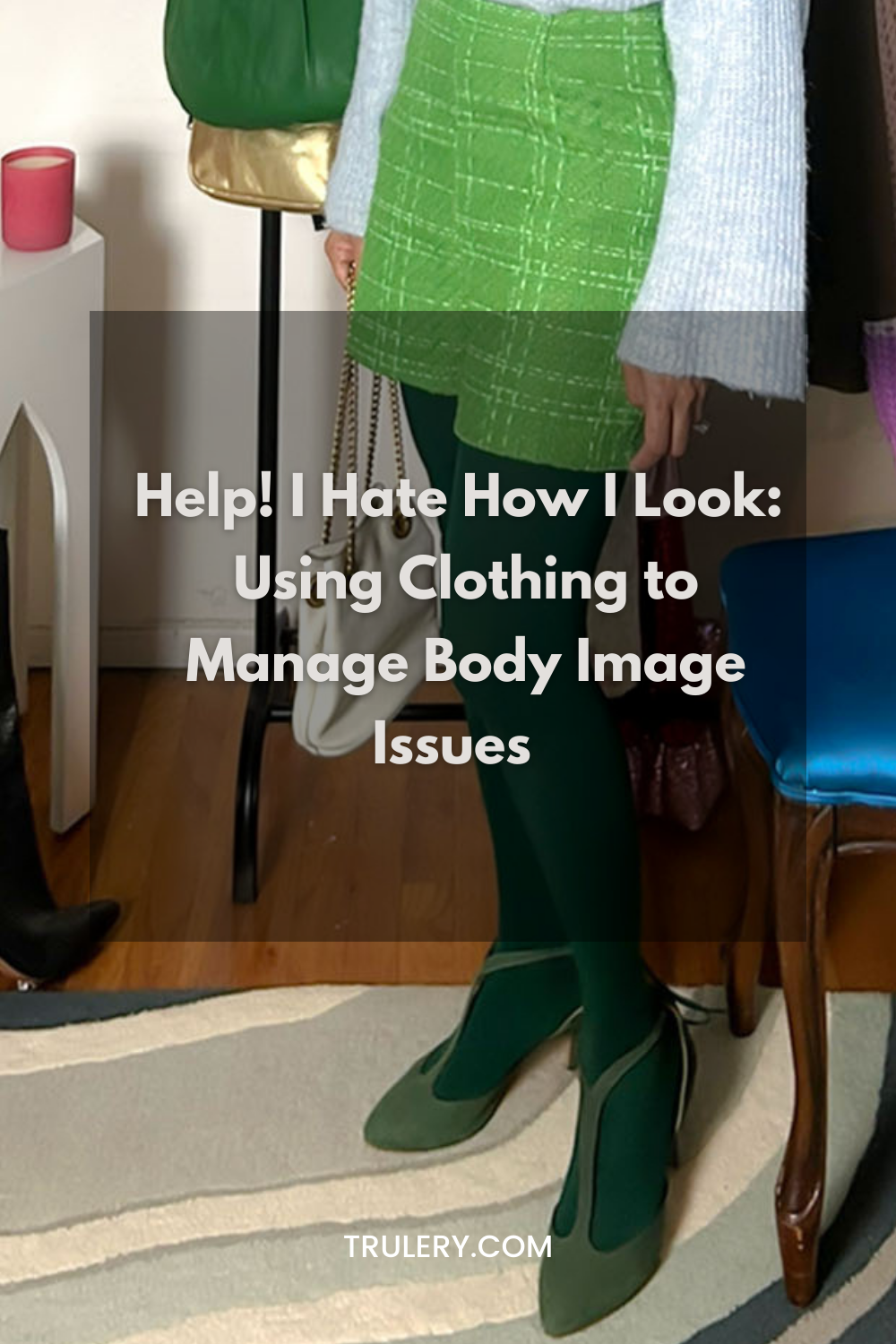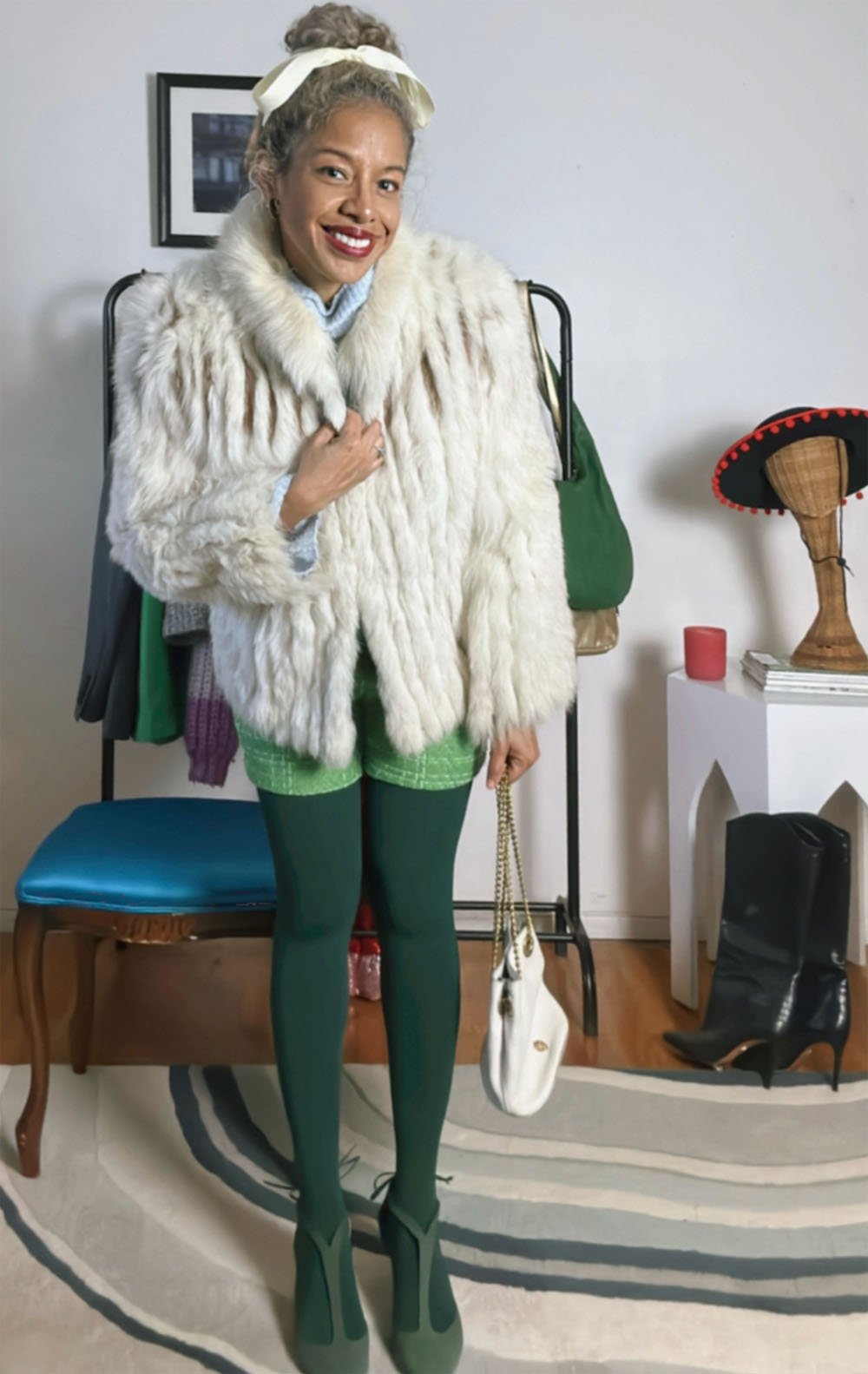Help! I Hate How I Look: Using Clothing to Manage Body Image Issues
/In the earlier part of my career, I worked as a therapist, mostly meeting with children and adolescents. I had a heart for my teens, often seeing them in response to significant trauma and helping them navigate identity issues. Without trauma, the teen years are hard enough. They’re spending lots of emotional energy trying to figure out who they are, and how they want to be in the world; and depending on life circumstances, that can come with a lot of self-sabotage. Unfortunately, too many of us can recall the, “I hate how I look” flare-ups we had during those angst teen years.
With that said, it’s no surprise that dissatisfaction with appearance or body image is a major issue that comes up during my clinical work (I still do evaluations from time to time). Whether a teen presents with anxiety, depression, or any other mental health issue, it’s often expressed through and complicated by body image issues. And the way it usually looks is an overwhelming disdain for a specific part or parts of the body like legs or arms. What’s more, they equate their poor perception of their body to their self-worth, and feel less than valuable as a result.
Sadly, body image issues don’t stop at adolescence. We often nurture body images issues well into adulthood such that when life gets challenging we tend to revert back to self-destructive patterns, including being preoccupied with what is wrong with our body. And the “I hate how I look” fits continue to be a part of our coping style well into our adult years. It goes without saying that we are more than our bodies; and one way to counter body image issues is to meditate on other things about us we know (even if we don’t always feel) are good and worthy of praise, like varied skills, kindness, bravery, and the list goes on.
Another way to counter body image issues is through clothing. According to Entwistle, author of The Fashioned Body, clothing is much more than a form of adornment, it is the way we learn to live in our bodies. There are tons of articles on ways to hide perceived body imperfections with clothing; and while many are useful, you can not use clothes to hide a largely poor self-image. Clothing and the body work as a team, and the body gives meaning to clothes and vice versa. Without the body, clothing is just a well-constructed piece of fabric. So in order for clothing to reach its full potential, it needs a body to give it life, soul, and the unique energy only a living breathing body can give. This is why two people can wear the same outfit and look quite different. If we value our body, it can live out its full essence within the context of clothing.
Of course, we don’t have to have a perfect body image to wear clothes well. Many of us are struggling to improve our body image and progress isn’t a straight line. But in the meantime, we can use clothing as a tool to feel good about ourselves in our bodies, letting go of the “I hate how I look” outbursts we may have come to fall back on. Here are three ways clothing can help us manage our body image.
1. Clothing helps us become our ideal
Just as Halloween costumes allow us to embrace the hidden parts of us, everyday clothing can work in a similar way. Our clothing gives us an opportunity to take on characteristics we admire, simply by wearing clothing that has symbolic meaning for us (a.k.a., enclothed cognition). To be clear, clothing does not have symbolic meaning without context, we associate it with the people who wear them and at a particular point in time. When we think of something like a beret, a tie, or black stockings with the line down the back (a personal favorite, ha!), we have a vision of what those clothing items symbolize. And if we enjoy wearing them, it is generally because we have seen it worn, and internalized what we think it means to wear them.
With that in mind, the ability to express ourselves through clothes and take on characteristics of our ideal look allows us to compensate for shortcomings we experience when we are anxiously preoccupied with our bodies. According to a 2012 article, Expression of Personality Through Dressing using clothing to compensate in this way helps us achieve psychological and spiritual balance. And it is this sense of balance that can gird up our sense of self, giving us the emotional resources we need as we are actively working towards improving our body image.
2. Clothing helps us get comfortable communicating parts of ourselves.
Clothing is often identified as a nonverbal form of communication. We can use clothing to feel better (a.k.a., dopamine dressing) and improve our mood. Or we can use clothing to lean into a miserable mood, creating something beautiful out of pain in a way akin to art therapy. So it’s important to be intentional about the message we’re conveying, not just to others but to ourselves.
For those who struggle with body image, clothing gives an opportunity to express body image issues in creative ways, and maybe release some tension. I once heard a quote by Diana Vreeland that said something like (and I’m paraphrasing) whatever you don’t like about your body, make that the best thing about you. And of course, this requires some ingenuity and the ability to let go of rigid ideas of beauty, something those with body image issues are working towards.
If this feels challenging, try doing an experiment and wear something out you’ve always liked and can wear well enough, but unreasonable body image issues have held you back (if you’re not sure what qualifies as “unreasonable” discuss it with a trusted friend or helping professional). Psychologists refer to this as an exposure technique, and it is a way to try out new experiences or ways of being without it being too overwhelming. Afterwards, take tabs on your experience and the reaction of others. Was it as bad as you thought it was? Are there any changes you’d like to make and do you have a healthy plan to make those changes? Can you consider developing a better appreciation for your body in these clothes even in its imperfect state? These are just some questions that will help you better process the experience, and of course it may be helpful to process this with someone else as mentioned.
3. Clothing gives an opportunity to alter questionable body image ideals
Often the reason we don’t like our legs, arms, butt or any other part of our body is because we have internalized alternate beauty standards. In the old days we just had to deal with the parts of our body we don’t like; but now with plastic surgery more accessible, we can change what we don’t like relatively quickly if we have the resources to do so. And while it’s beyond me to tell anyone what to do with their body, as a psychologist, it’s my job to understand the root of these changes. That is, it’s one thing to want to make tweaks to your body, and another thing if the tweaks are never enough. If it’s never enough, it suggests your desire to alter your body is based upon a poor sense of identity, and it is futile to build a healthy image on a faulty foundation.
While plastic surgery may not be an option for some, clothing is. Fortunately, we have agency with clothes and can make active changes with clothing to accept or reject body image ideals. We can use clothes to cover up parts of our body we don’t like or as mentioned above, show off those parts. According to a concept known as cognitive control, we have the ability to change the way we see a situation. So exercising a sense of control over your clothing can act as a catalyst for having control over the way you choose to see your body. Since body image standards have to start somewhere, why not with you?
If you’ve used clothing to manage body image issues, what ways have they worked for you, or not? Share it with us in the chat.













